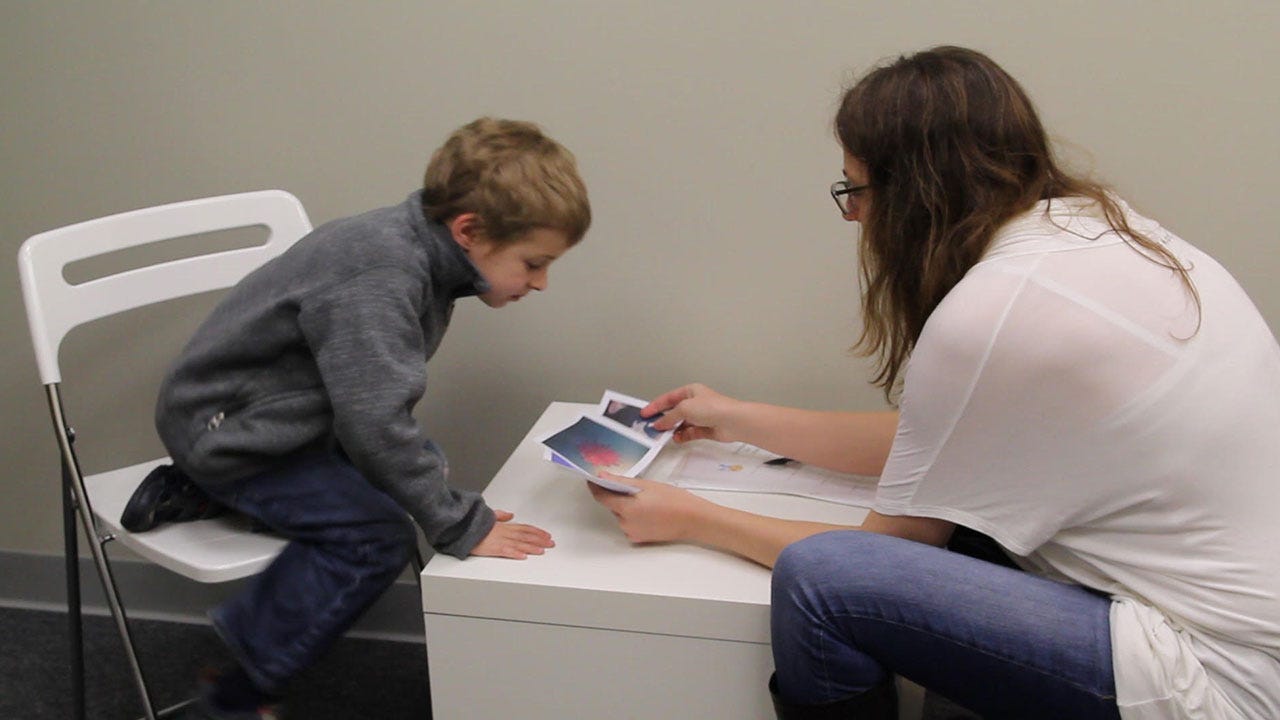A conversation with Tamara Vanderwal, researcher at Yale Child Study Center
The film Inscapes was created to help solve an immediate, practical problem inherent to a branch of neuroimaging research called “resting state” functional magnetic resonance imaging (fMRI).
Usually for these scans, subjects lay inside the MRI magnet and look at what we call a fixation cross (a static plus sign) for about 6–10 minutes. They are asked to keep still and to try and stay awake.
The absence of a task enables us to study brain activity that occurs “at rest” and has greatly expanded our understanding of how the brain is functionally organized into networks.
But for children, this supposedly task-free state is actually a very difficult task. Our idea to help with this was to create a naturalistic viewing paradigm (i.e., a movie) that would enable children to stay still more easily while also not driving all of the cognitive processes evoked by conventional movies.
I hired two amazing artists (Tobias Hoffman, www.man-made-blossom.com in Germany and Jodi S. van der Woude in Canada) to work on the visuals and to compose the score for the film. Both Tobias and Jodi have an affinity and aptitude for scientific thinking, including statistics and math, so the work was an intercalation of art and science from the beginning.
We approached the inside of the MRI magnet like we were making a site-specific installation, and adopted aesthetic constraints based on the need to scientifically control for different things like luminance levels and sound density. I also had an amazing team of developmental specialists such as child psychoanalysts and psychiatrists to consult with as the project evolved.
The resulting film is a slow-moving animation that adults enjoy, but that children find highly engaging. We have tested the film for both head movement and brain responses, and so far, feel that the investment has paid off. We also shared the film as part of the “open science” ethos of the resting state community, and about 12 or 14 different labs are currently using it in Canada, Taiwan, Ireland, Germany, and the U.S.
One of the propositions that has emerged from this project is that perhaps engaging professional artists in the creation of scientific stimuli might be a novel way to improve our data.

Can you describe how you came up with the idea of making this video?
In 2012, I was brand new to this particular branch of fMRI. I attended an “unconference” called Brainhack (www.brainhack.org), which is a multidisciplinary gathering with little to no agenda that provides a forum for collaborative projects in brain science. Everyone was talking about the problem of head motion, particularly with kids, and that’s when I thought about creating a “resting state” movie. Then a visual artist, Tobias Hoffman, presented a film from his master’s thesis depicting the process of a stroke occurring in the brain. I loved his technological, scientific aesthetic, and so I approached him about my movie idea. About 6 months later I was sitting in his studio in Berlin and we were storyboarding the film.
What are the next steps in terms of using animations as a way of exploring use of fMRI?
The use of movies, including animations, as fMRI stimuli is really on the rise right now. I am interested in developing a sequence of movies created specifically to drive different processes in the brain. Inscapes would function as a baseline, and we could compare brain patterns collected during social movies, movies that drive emotional responses etc. to the patterns we see with Inscapes. I picture this as being sort of like a cardiac stress test — where you walk for awhile and then run — for the brain. I’d be interested in looking at the differences across those types of conditions.
How was your experience premiering this film at Imagine Science Film Festival? What are your thoughts of a video as not only having scientific value but also a cinematic quality?
I really appreciated the chance to present Inscapes in a film festival setting. Usually when I give a research talk, I show about twenty seconds of the film, because what scientists generally care about is data, data, and more data. So it was nice to be able to show the full 7 minutes, and to talk in some detail about the aesthetic decisions that we made and how we tried to merge the scientific and aesthetic requirements in a cohesive way. For example, the composer used the pitch and frequency of the noise the MRI scanner makes as the basis for her score. Because of the scientific goals, Inscapes is a strange film — no scene cuts, limited luminance changes, no social narrative — so I was nervous about how it would seem from a non-scientific perspective. One of the comments that I almost always get in the science world is why I didn’t just use a screensaver, so it was such a relief to present in a film-minded group that would never ask that question!
About the Author
Tamara Vanderwal is originally from British Columbia, but she has lived in the U.S. since she went to medical school. She currently works about 80% of the time as a researcher at the , and practices as an outpatient child and adolescent psychiatrist the other 20% of the time.
Free access to one of our recent articles here
Interview conducted by Alexis Gambis, Executive Director of Imagine Science Films